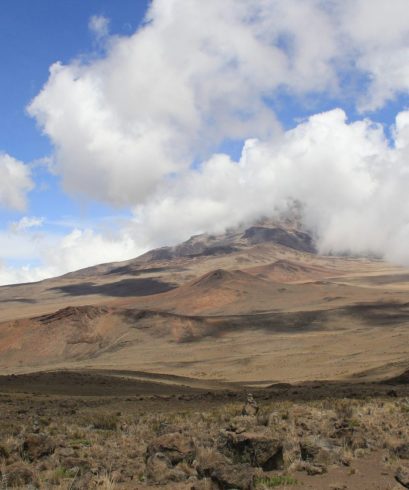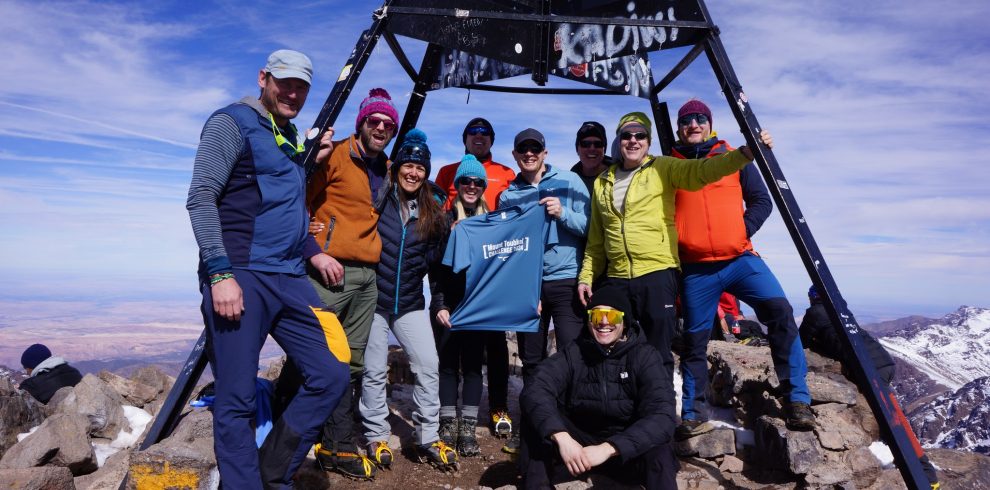-
Tents: We provide high-quality, comfortable tents with thick underlay mats, and large, comfortable group tents if required. Temperatures reach down to - 15°C (summit day, early morning) with wind chill factor down to - 25°C
Overview
Embark on an epic journey to the summit of the highest freestanding mountain in the world, standing tall at 5895m. From the arid African plains to the awe-inspiring snow-capped glacial peak, this bucket-list adventure promises to test your physical and mental strength.
About the Rongai route
The Rongai-Mawenzi Route offers a gentle, diverse climb with the ascent from the north-east and descent over the southern slopes of the Marangu Route. This itinerary provides with a perfect elevation profile so that we can adapt to the thin air slowly and comfortably. Over 98 % of our participants reach the top of Africa, including less-experienced hikers. Regardless of the level of experience, for many, a journey to the top of Kilimanjaro symbolizes the search for deeper meaning in life. It is indeed an unforgettable adventure, an opportunity to challenge yourself and to discover the magnificent Kilimanjaro. “Karibu Sana” – Welcome!
Because the Rongai Route starts on the north side of the mountain, not far from the border with Kenya, it is also the driest route on Kilimanjaro.
This makes it a good choice for a trek all year round, but especially during the rainy season in April and May. Most of the rain storms tend to stay on the southern side of the mountain, allowing Rongai hikers to stay drier and warmer. There is a great potential to spot wildlife, including Colobus Monkeys, in the first few days of the climb.
Here is a note from our partner company: Since 2003 on Kilimanjaro: Almost every participant has reached the summit! We have guided more than 300 guests to the summit of Uhuru (5985m) – only on this route. We are happy so share our expertise of the mountain with you. We have conducted this special program for the first time in 2006 and we have been regularly improving it since then.
HIGHLIGHTS
- Traverse a less-traveled route, ensuring quieter paths and campsites along the way.
Embarking on a Kilimanjaro expedition requires participants to test their endurance at high altitudes. Climbing Kilimanjaro demands not only physical fitness but also strong mental stamina and the ability to sustain strenuous exercise over several days. Rest assured, you’ll have the unwavering support of our experienced Freedom Trail Treks Leader, along with a dedicated team of guides and porters in our partner company.
What does it take to climb Kilimanjaro?
Technical Skills: Despite its towering height of nearly 6,000 meters, climbing Kilimanjaro doesn’t necessitate any prior mountaineering or climbing expertise. This route poses no technical requirements, ensuring accessibility to climbers of varying experience levels.
Fitness and Endurance: While reaching Kilimanjaro’s summit requires a reasonable level of fitness, the daily stages are manageable, typically ranging from 2 to 7 hours of moderate-paced trekking. The summit day, being the longest, entails: approximately 8 to 10 hours of ascent from Kibo Hut to Uhuru Summit, followed by about 2 hours of descent to Kibo Hut for a brunch/lunch break, and finally another 4-5 hours of descent to Horombo Hut.






















